GENERAL
The Future of Efficiency: Connected Systems for Growing Businesses
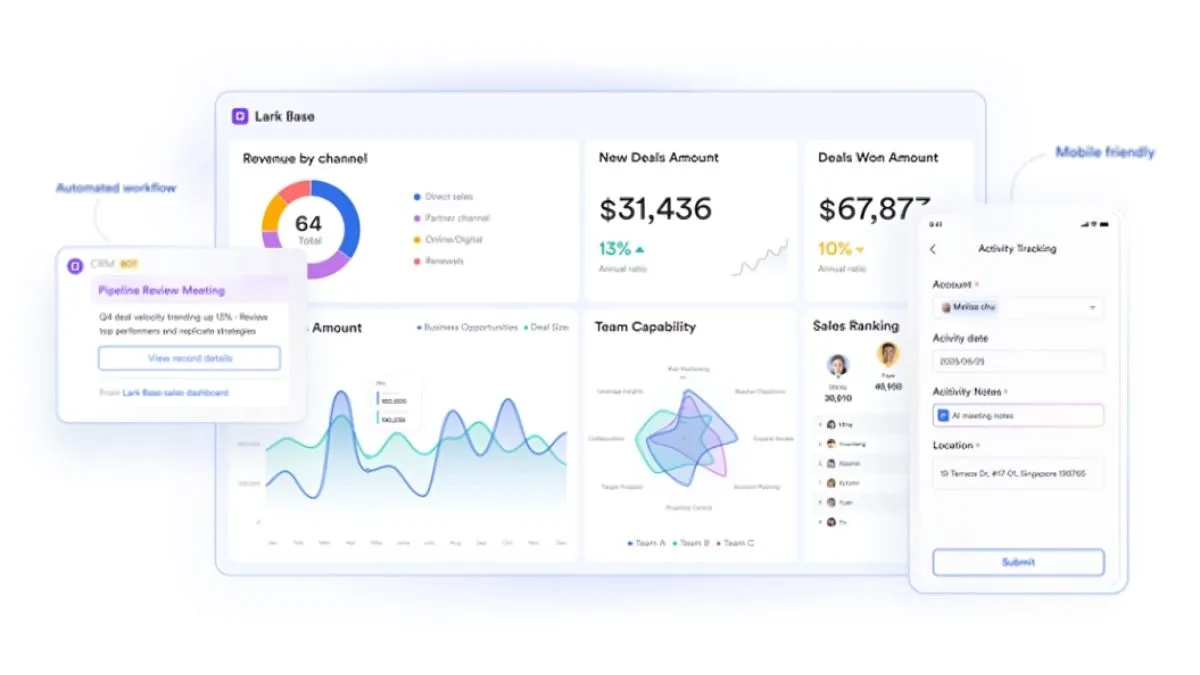
Expanding companies create data at a rate that is difficult to manage from a single spreadsheet. Traditional and historical spreadsheets quickly reach obsolescence as the number of files stacks up, most often sent via email. This creates delays in analysis and generates decisions based on historical data and without the latest figures.
Lark Sheets takes a different approach by allowing teams to work together on live data well within their project management tools. The finance team can build projections while the operational team is updating their resource consumption with real-time inputs from their work. This allows the team to consistently work from the same latest numbers. And to make this even easier, Sheets works with Base or Docs, causing insights to flow into planning and project execution, whether they come from team conversations as the plan evolves or from Ad Hoc data analysis performed by finance as planned.
For a company that is scaling, this means that data-driven decisions happen quicker and without wasted time checking and reconciling spreadsheet files.
Table of Contents
Lark Base: Creating structure that grows with you
When organizations scale, the lack of structured systems often creates inefficiency. Multiple departments begin tracking information separately, leading to duplication and misalignment. Lark Base provides a flexible framework that adapts to the needs of different teams while keeping everything connected.
Base, on the other hand, presents the features of a CRM app, linking client records to ongoing projects and deliverables. Marketing can track campaign performance with kanban boards, while HR manages onboarding through timelines, all within the same system. This adaptability means businesses don’t need to add new apps for every function. Instead, Base scales with them, providing visibility and consistency across teams.
Lark Wiki: Preserving knowledge for long-term efficiency
As companies advance, so does the problem of maintaining knowledge. Any processes, best practices, or guidelines can usually be found in emails or in documents that are not easy to find, often forcing employees to redo work that has already been done previously.
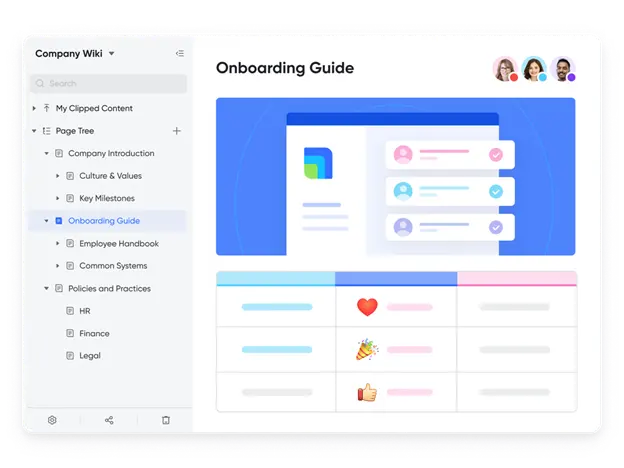
Lark Wiki provides a solution by being a permanent knowledge base with structured information that anyone can access. Teams can document how they do things just once, as that knowledge is available to everyone. For example, a new employee who is trying to learn the procurement process won’t need to continually ask their coworkers; they can simply go to the Wiki. When we offload knowledge that’s typically contained in our heads to the Wiki, organizations reduce dependence on memory, which allows knowledge to more easily scale the organization and decision-making to happen more quickly, which helps minimize wasteful redundancy.
Lark Mail: Centralizing communication without silos
Email remains essential for external communication, but in growing businesses, it often becomes a silo. Client approvals, vendor updates, and compliance correspondence get disconnected from project management, creating inefficiency.
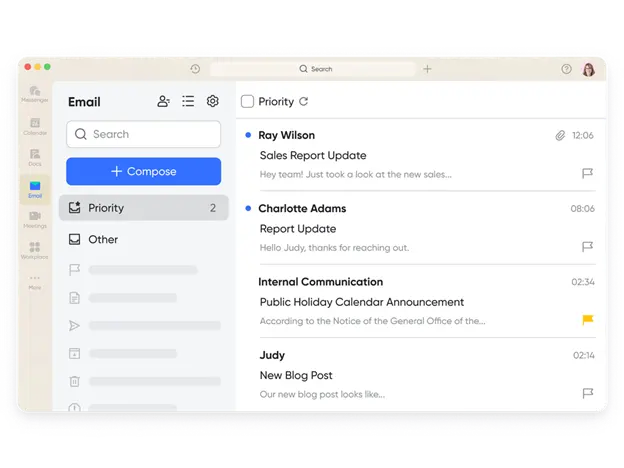
Lark Mail brings email into the same connected environment where tasks, documents, and projects already live. A client approval arriving by email can be attached directly to a Base record, while vendor updates can link to related tasks. This keeps communication contextual and reduces the time employees spend copying information between systems. For a growing business, Mail ensures external communication supports internal execution seamlessly.
Lark Meetings: Turning discussions into execution
As organizations grow, the number of meetings grows, but without an agenda or structure to prevent wandering off track, meetings can be repetitive and useless. Lark Meetings embeds collaboration directly into video meetings; teams can pull up a shared Doc, update a Base record, and assign follow-up action items as the discussion is happening.
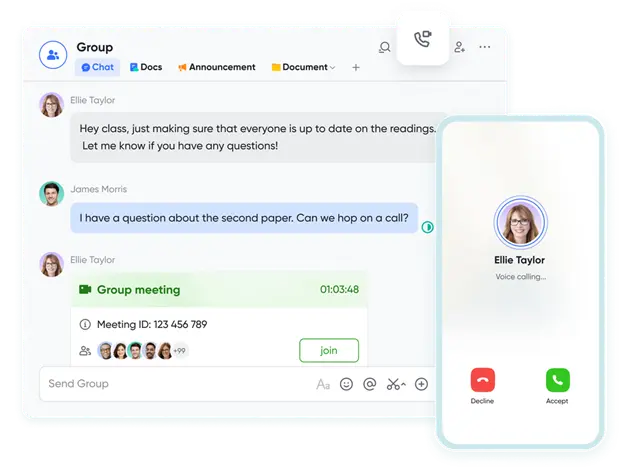
For example, a product sprint review doesn’t conclude with fuzzy notes about what was decided. Instead, it ends with the status of the project being updated, decisions made, and assignments for follow-through. Recordings and transcripts help create accountability, and reminders that go out will eliminate any excuse for failure to follow up. This is where the automated workflow concept comes into play; recurring processes like sending stand-up updates or assigning pre-meeting tasks happen without effort. Meetings focus less on talking and more on ensuring execution happens quickly.
Lark OKR: Keeping growth aligned with strategy
Efficiency at scale isn’t just about speed, it’s about direction. Lark OKR ensures that as teams grow, their work remains aligned with organizational priorities. Objectives are set, measurable results are tracked, and progress is visible across departments.
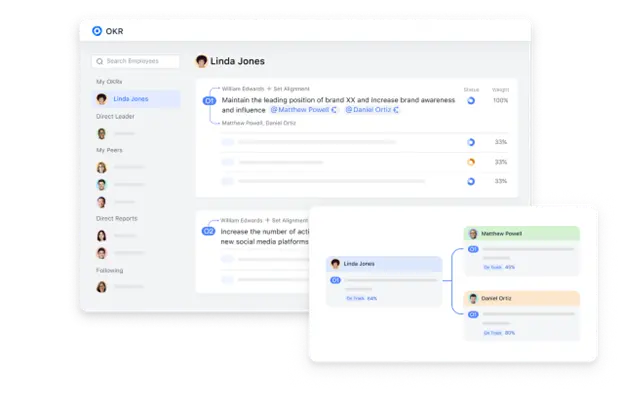
For example, if a company’s quarterly goal is expanding into a new market, sales, marketing, and operations can all tie their projects directly to that objective. As updates are logged into Base or Tasks, they feed into OKR tracking automatically. This prevents teams from drifting into busywork and reinforces a culture where daily execution supports long-term strategy. For growing businesses, OKR keeps expansion purposeful rather than chaotic.
Conclusion
Growth doesn’t have to be a cost of efficiency. It is the complexity of disparate tools and processes, causing delays and duplication, that expands the task for growing organizations. Connected systems such as Lark are and provide a better way forward, pulling together communication, planning, documentation, and execution within a connected ecosystem.
Sheets turn data into insights in real-time, Base provides structures that scale, Wiki maintains knowledge, Mail centralizes communication, Meetings support outcomes with automation, and OKR connects work to strategy. Together they create an environment where growth does not sacrifice efficiency; efficiency is made better as the organization grows.
The future of the organization creates. The future of efficiency belongs to organizations that deploy systems of record and other tools designed around scale. The impact of connected systems reduces the complexity of growth and redirects focus on impacts.
-

 GENERAL5 months ago
GENERAL5 months agoChristofle – For Those Who Dream of Family Heirloom Silver
-

 SPORTS7 months ago
SPORTS7 months agoDiscover the World of Football with Streameast: Watch Your Favorite Leagues and Tournaments
-

 GENERAL4 months ago
GENERAL4 months agoUncovering the World of кинокрадко: The Dark Side of Film Piracy
-

 GENERAL2 months ago
GENERAL2 months agoATFBooru: Anime, Gaming, and Subculture Imageboard
